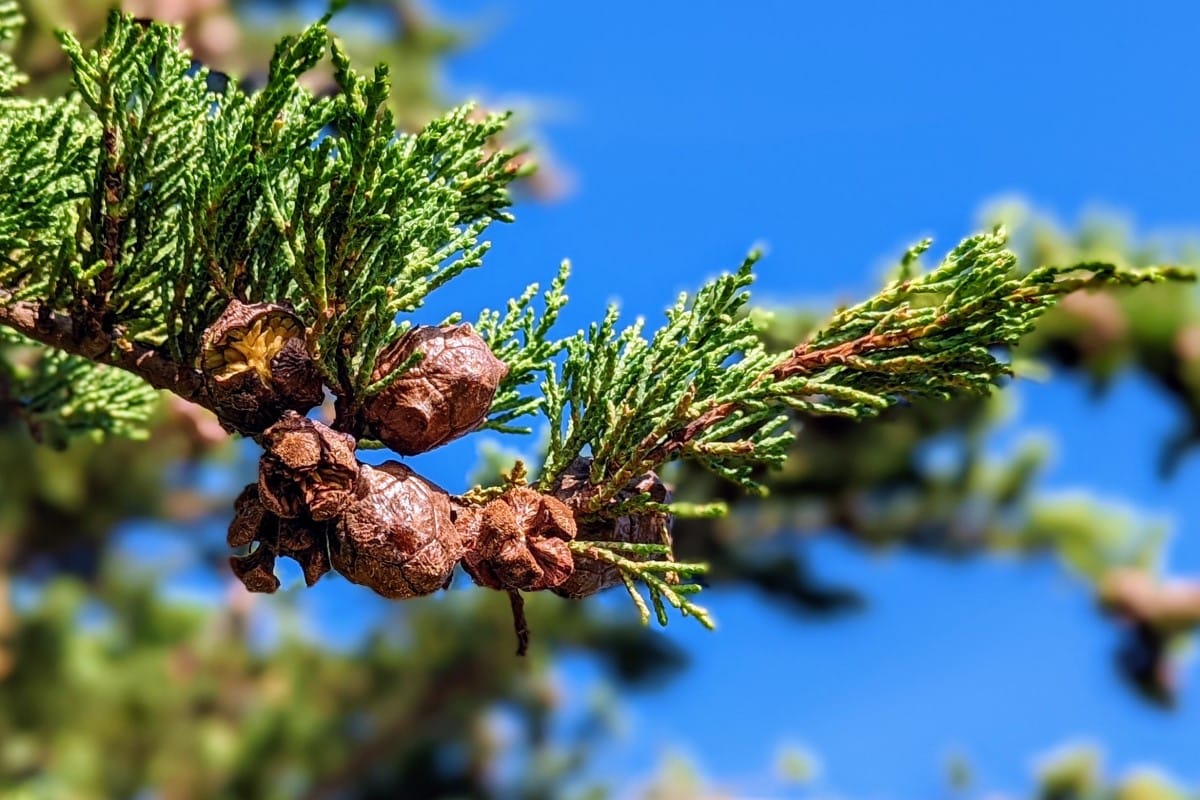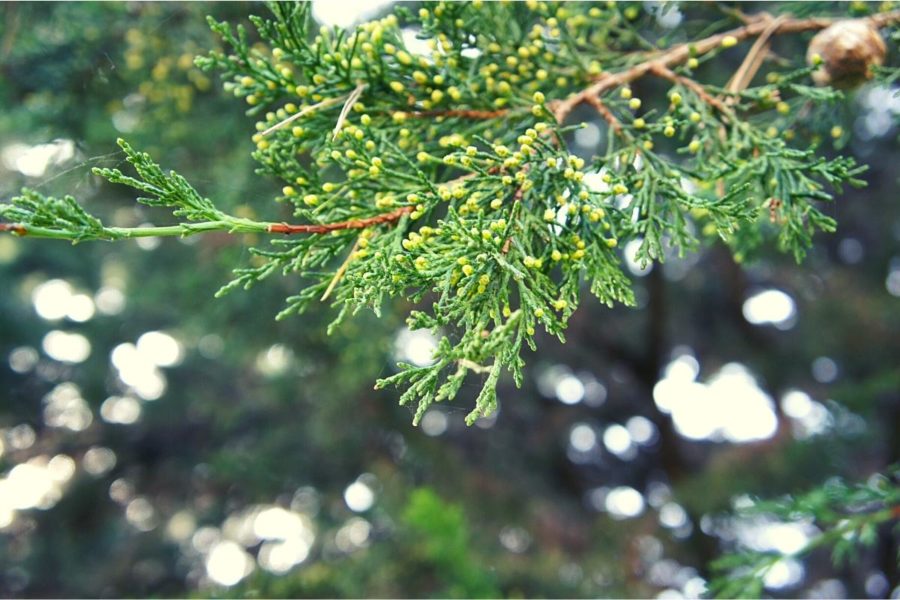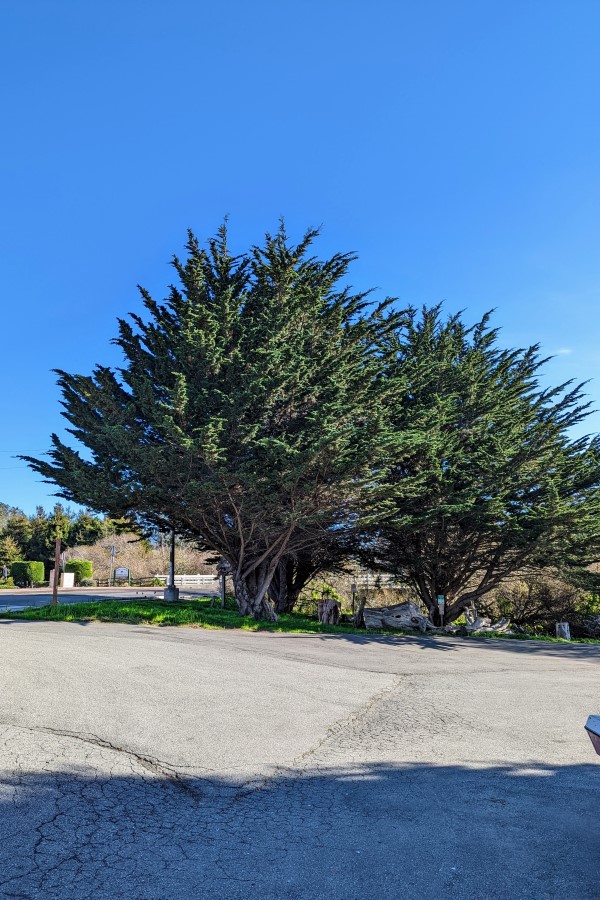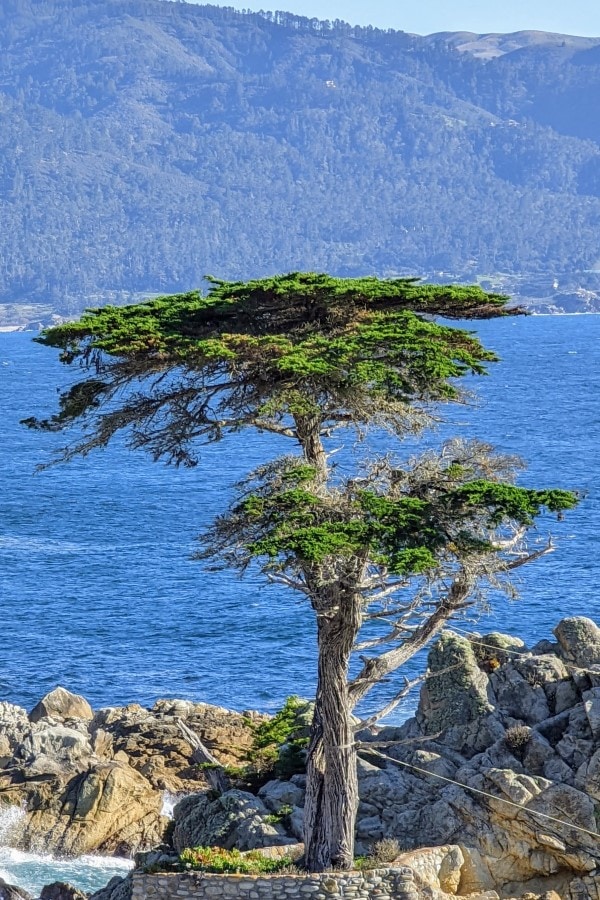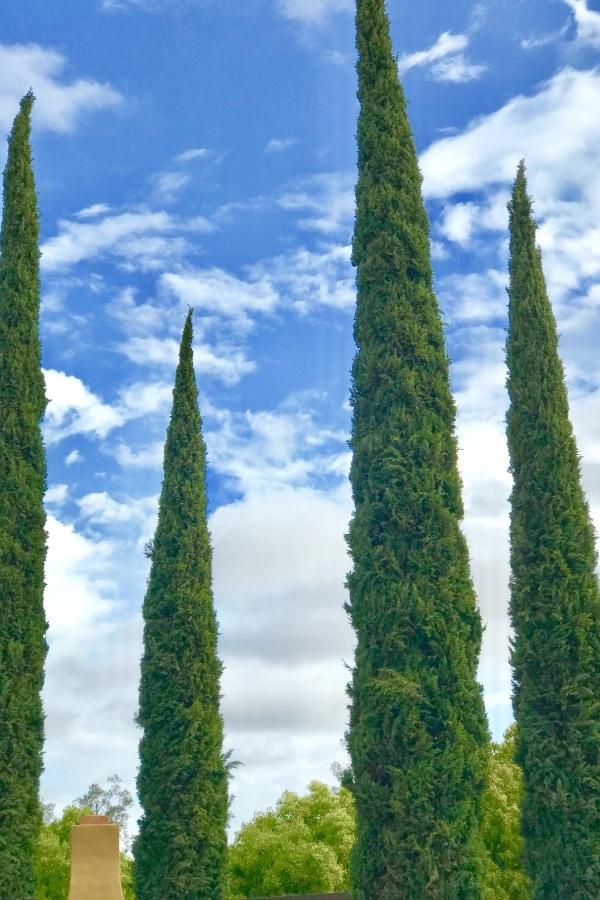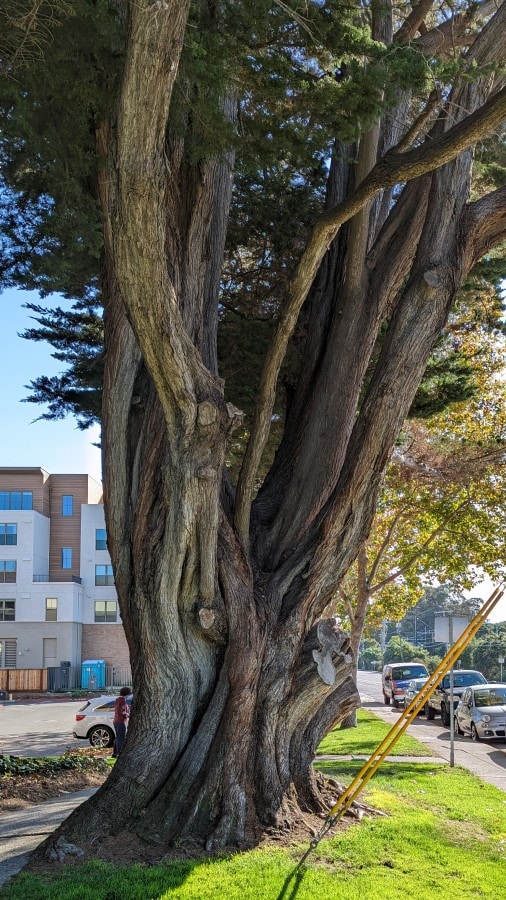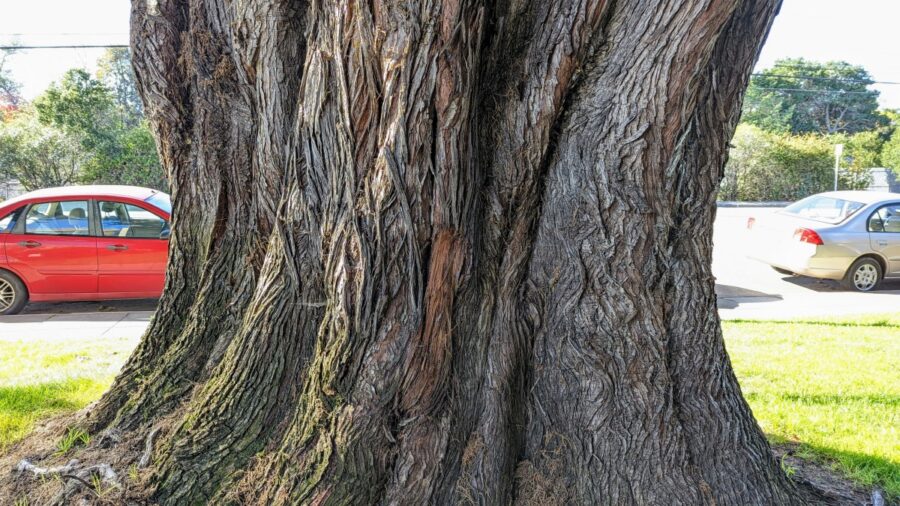In this article, with the help of photos, we will learn about cypress tree allergy (Genus: Cupressus or Hesperocyparis, Family: Cupressaceae). In addition, we will also learn how and when their pollen spreads.
The allergists usually do not directly test for cypress pollen. Instead, they use Mountain cedar (Juniperus ashei) pollen as a proxy, which is a notorious allergen of the same family.
Cypress tree allergy facts and figures (Cupressus)
| Cypress tree allergy profile | Cupressus or Hesperocyparis |
|---|---|
| Pollen season | Winter |
| Pollination type | Wind-transported; releases abundant pollen in the air |
| Gender | Monoecious: Male and female cones are on the same tree |
| Cross-reactivities with other pollen | Other trees of the cypress family, for example, junipers. However, the cross-reactivity to redwood trees is not well established |
| Pollen source | Tiny, 2mm long, yellow male cones, which appear on the tip of the twigs during winter |
| Tree leaves | Short, scale-like, tightly packed around the twig |
| Tree fruit | Oblong, woody cones with 8 to 10 scales, generally 1 to 1 1/2 inches in size (see photos below) |
How to know if a cypress tree is releasing pollen?
Tiny male greenish-yellow cones start to appear on the trees in December. Once the cones mature and start to look darker yellow, it is likely that the tree is releasing pollen.
For many trees, the cones appear on the higher branches first and it requires some effort to spot them.
When do cypress trees release pollen?
Monterey cypress, the most common species in coastal Northern California, releases pollen during winter.
In the San Francisco Bay area, the cypress trees release pollen between January and March. Although most of the trees are on the coast, the pollen travels inland with the wind.
Cypress pollen under a microscope looks similar to those of junipers. Furthermore, medical literature consistently notes a cross-reactivity among cypress and juniper pollen. Meaning, if a person is allergic to one pollen of the family, it is likely that they will react to the other pollen as well. For these reasons, our weekly air sampling reports combine cypress, juniper, and redwood pollen under the family name (Cupressaceae).
Depending on the amount of rainfall and weather, the pollen season could differ slightly from one year to the next. This is why it is important to learn about allergy plants and their pollen.
However, if you live in the San Francisco Bay Area, you have an easier way out! I do regular tree inspections and air sampling in the area to provide reliable pollen updates on our website
PS: Cross-reactivity of redwood pollen with other members of the cypress family is not well established.
What does the cypress tree pollen look like?
Cypress tree pollen looks a lot like a currency coin. Round, 35 microns, with a warty surface with no furrows or pores.
The pollen is fine yellow powder but airborne individual grains are invisible to the naked eyes. As a result, during winters, all Northern California residents breathe in a lot of cypress pollen without ever seeing it.
What do cypress trees look like?
The trees have scaly leaves on a short needle-like twig. The canopy of the Monterey cypress is lush and full when young, but thins out with age. The spreading canopy of old cypress trees is extremely picturesque.
In contrast, Italian cypress trees have straight, conical, and upright canopies.
The other species of cypress trees may have shapes that are in between conical and spreading. However, their leaves and cones are all very similar to those of Monterey cypress.
Key takeaway
Cypress tree pollen of genus Cupressus belongs to the same family – Cupressaceae – as Mountain cedar. Cross-reactivity is common in this family. As a result, people who have allergies to cypress can develop allergies to juniper trees as well.
To understand cross-reactivities better, read my pollen allergy guide.
Sources
References
- Allergy Plants by Mary Jelks, M.D.
- Plant identification terminology by James G. Harris and Melinda Woolf Harris (Second Edition)
- Sampling and indentifying pollens and Molds by E. Grant Smith
- The trees of golden gate park and San Francisco by Elizabeth McClintock PhD.
All pictures, unless otherwise credited to another source, are taken by the author and are copyrighted material. The pollen picture is taken in our aerobiology lab using an Olympus compound microscope. The use of pictures is permitted with a link back to the source page on the internet, or, an attribution to allerma.com on the printed material.

